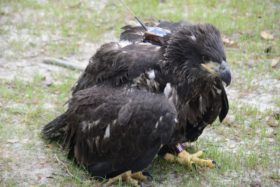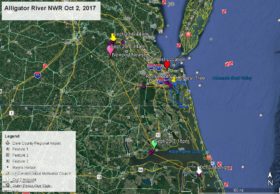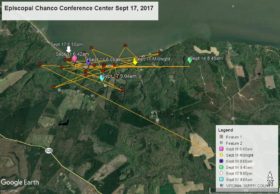First Feedings of First Eaglet
First Eaglet of the 2011 Season
March 13, 2011Azalea Remains in North Carolina
March 14, 2011



The first eaglet of the 2011 season at Norfolk Botanical Garden received its first feeding of fish – Gizzard Shad – at 2:54pm about 3 1/2 hours after emerging from its eggshell. It may have taken as much as two days to break out of that egg housing, and left the young eaglet worn out from all the effort. The chick had to rest and gain enough strength to hold its head up for a few minutes and be able to swallow the tiny bits of fish from its mom. All of us watching the WVEC webcam could not have had a better view! Mom positioned herself so we could see and the light was nearly perfect. These feeding will take place throughout the day and night. These photos include two additional feedings at 4:01 and 4:51.




8 Comments
When is the next egg expected to hatch?
Response – Today or tomorrow
how grand this all is. thank you staff and all that make this possible to view.
What a wonderful thing to see such a majestic animal be so careful to feed its young. We all need to appreciate being able to witness this wonderful thing. I just hope this will make us all understand how critical it is to help these birds sustain life as they know it today.
Sunday sure looks like a very healthy eaglet, and Momma is such a good parent. Thanks Reese for posting these fabulous pics.
How wondrous to bear witness to the feeding! My students and I have been watching from class. We have had so many teachable moments and learning experiences that have stemmed from watching the eagle cam. Thanks you!
Its amazing wow I never seen somthing so buitiful I hope I see the next feeding
Thanks for the fantastic info. We really appreciate all you do.
My students have enjoyed checking in from time to time each day since Monday. We are eagerly awaiting the next hatching.